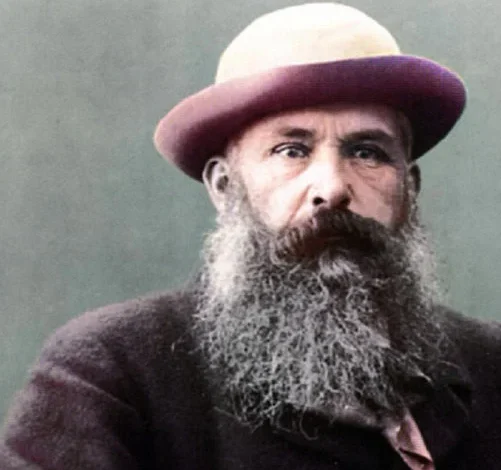Claude Monet Biography: Family, Age, Early Life, Education, Career, Net worth

Claude Monet Biography
Claude Monet Biography:Claude Monet was born in 1840 in France and enrolled in the Academie Suisse. After an art exhibition in 1874, a critic insultingly dubbed Monet’s painting style “Impression,” since it was more concerned with form and light than realism, and the term stuck. Monet struggled with depression, poverty and illness throughout his life. He died in 1926.
Claude Monet Early Life
One of the most famous painters in the history of art and a leading figure in the Impressionist movement, whose works can be seen in museums around the world, Oscar Claude Monet (some sources say Claude Oscar) was born on November 14, 1840, in Paris. Monet’s father, Adolphe, worked in his family’s shipping business, while his mother, Louise, took care of the family. A trained singer, Louise liked poetry and was a popular hostess.
In 1845, at the age of 5, Monet moved with his family to Le Havre, a port town in the Normandy region. He grew up there with his older brother, Leon. While he was reportedly a decent student, Monet did not like being confined to a classroom. He was more interested in being outside. At an early age, Monet developed a love of drawing. He filled his schoolbooks with sketches of people, including caricatures of his teachers. While his mother supported his artistic efforts, Monet’s father wanted him to go into business. Monet suffered greatly after the death of his mother in 1857.
In the community, Monet became well-known for his caricatures and for drawing many of the town’s residents. After meeting Eugene Boudin, a local landscape artist, Monet started to explore the natural world in his work. Boudin introduced him to painting outdoors, or plein air painting, which would later become the cornerstone of Monet’s work.
Read Also:Shalini Passi Biography:Family, Age, Early Life, Education, Career, Net worth
Claude Monet Career
1859, Monet decided to move to Paris to pursue his art. There, he was strongly influenced by the paintings of the Barbizon school and enrolled as a student at the Academie Suisse. During this time, Monet met fellow artist Camille Pissarro, who would become a close friend for many years.
From 1861 to 1862, Monet served in the military and was stationed in Algiers, Algeria, but he was discharged for health reasons. Returning to Paris, Monet studied with Charles Gleyre. Through Gleyre, Monet met several other artists, including Auguste Renoir, Alfred Sisley and Frederic Bazille; the four of them became friends. He also received advice and support from Johann Barthold Jongkind, a landscape painter who proved to be an important influence to the young artist.
Monet liked to work outdoors and was sometimes accompanied by Renoir, Sisley and Bazille on these painting sojourns. Monet won acceptance to the Salon of 1865, an annual juried art show in Paris; the show chose two of his paintings, which were marine landscapes. Though Monet’s works received some critical praise, he still struggled financially.
The following year, Monet was selected again to participate in the Salon. This time, the show officials chose a landscape and a portrait Camille (or also called Woman in Green), which featured his lover and future wife, Camille Doncieux. Doncieux came from a humble background and was substantially younger than Monet. She served as a muse for him, sitting for numerous paintings during her lifetime. The couple experienced great hardship around the birth of their first son, Jean, in 1867. Monet was in dire financial straits, and his father was unwilling to help them. Monet became so despondent over the situation that, in 1868, he attempted suicide by trying to drown himself in the Seine River.
Fortunately, Monet and Camille soon caught a break: Louis-Joachim Guadibert became a patron of Monet’s work, which enabled the artist to continue his work and care for his family. Monet and Camille married in June 1870, and following the outbreak of the Franco-Prussian War, the couple fled with their son to London, England. There, Monet met Paul Durand-Ruel, who became his first art dealer.
Returning to France after the war, in 1872, Monet eventually settled in Argenteuil, an industrial town west of Paris, and began to develop his own technique. During his time in Argenteuil, Monet visited with many of his artist friends, including Renoir, Pissarro and Edouard Manet—who, according to Monet in a later interview, at first hated him because people confused their names. Banding together with several other artists, Monet helped form the Société Anonyme des Artistes, Peintres, Sculpteurs, Graveurs, as an alternative to the Salon and exhibited their works together.
Monet sometimes got frustrated with his work. According to some reports, he destroyed a number of paintings—estimates range as high as 500 works. Monet would simply burn, cut or kick the offending piece. In addition to these outbursts, he was known to suffer from bouts of depression and self-doubt.
Claude Monet personal life
1866 Monet had a child with Camille Doncieux, who had been his model. They married in 1870 and had two children, Michel and Joseph. In 1870 he moved to England to escape the Franco-Prussian War, and in 1871 he moved to Argenteuil near Paris where he painted some of his most famous pictures. In 1873 he painted Impression, Sunrise, showing the sea at Le Havre. When this picture was shown in 1874 one critic took its title and called the group of artists “Impressionists”. He intended to make fun of the artists, but the name has stuck and this is what people today call this style of painting.
In 1879 Camille died of tuberculosis. Alice Hoschedé decided to help Monet by taking care of his children as well as her own. In 1883 they moved to a house in Giverny where Monet planted a large garden. Monet married Alice in 1892.
Monet found that his garden inspired him to paint pictures of it, particularly the water lilies. Alice died in 1911, and his son Jean was killed in World War I in 1914.
Monet used broad brush strokes to build up his pictures, and painted quite quickly to try and get the idea of the light he could see into his paintings. If you go very close to one of his pictures it is hard to see what it shows, but if you stand back everything becomes clear.
His later paintings include series, in which he paints the same subject in different lights. For example, he painted a series of pictures of haystacks in a field, and another series of pictures of the west front of Rouen Cathedral. There are many paintings of the lilies in his garden at Giverny.
Claude Monet’ Net worth
Claude Monet’s net worth isn’t explicitly stated, but we can get an idea of his financial situation from his successful art career. As a renowned French painter and founder of the Impressionist movement, Monet’s works were highly sought after during his lifetime.¹
Monet’s financial stability improved significantly after he received support from art collectors like Louis-Joachim Gaudibert and Gustave Caillebotte. He was also able to sell some of his paintings, including “Women in Garden” and “The Beach at Sainte-Adresse”.
Today, Monet’s paintings are worth millions. For example, his “Impression, Sunrise” (1872) is considered one of the most valuable paintings in the world. While we can’t estimate Monet’s exact net worth, it’s clear that his artistic talents brought him significant financial success during his lifetime.




